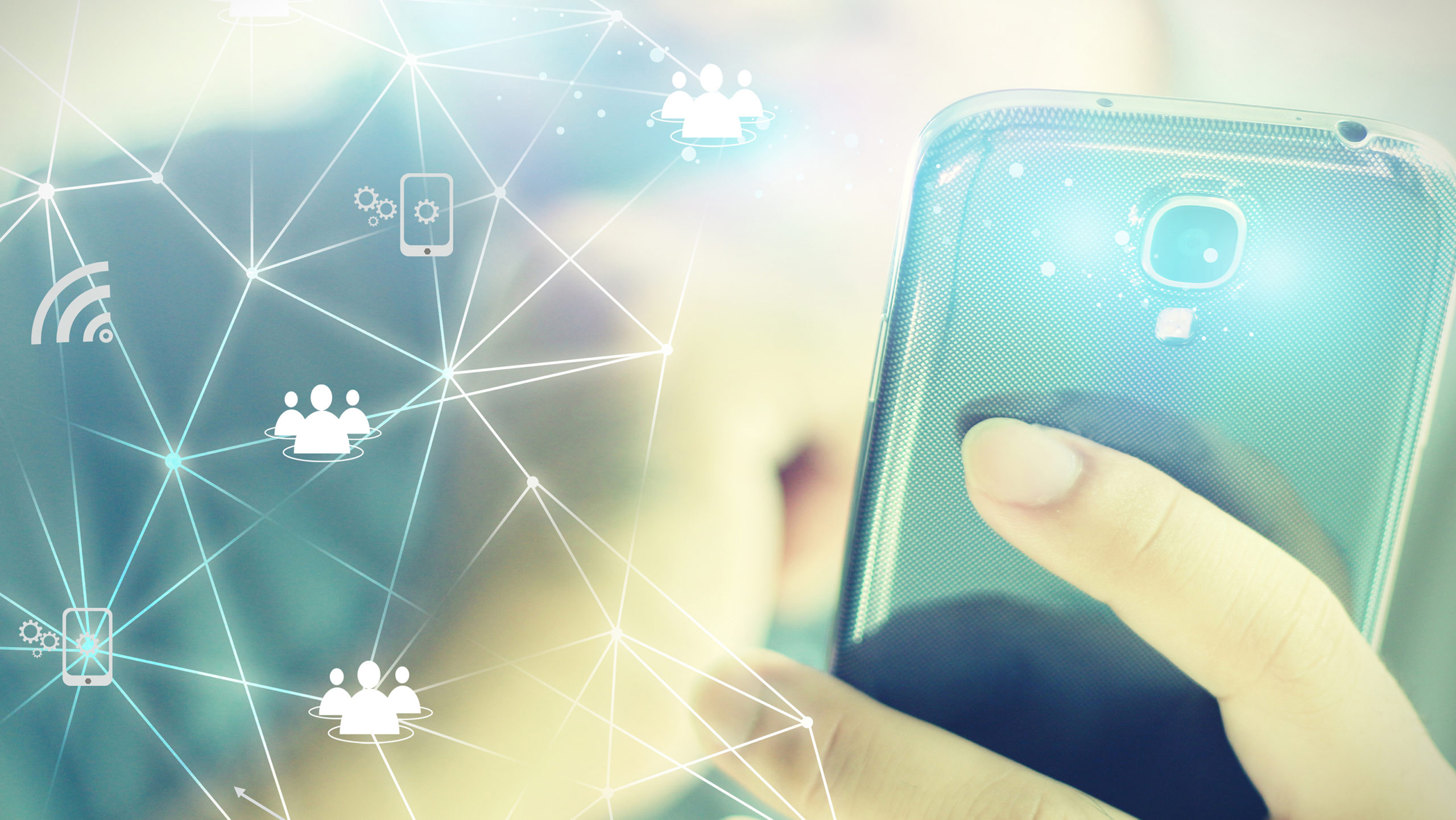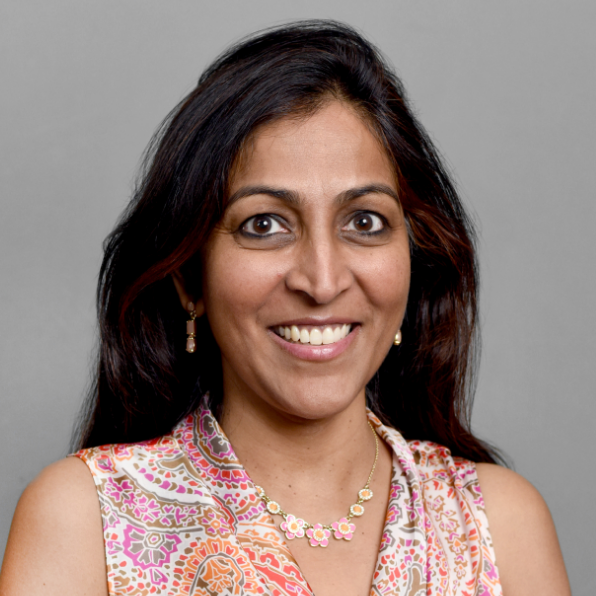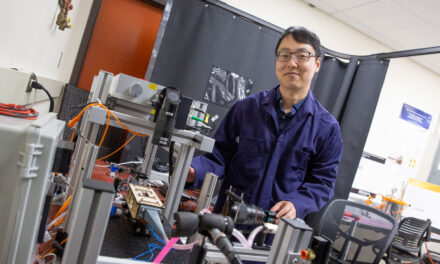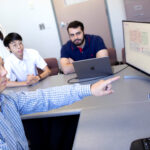
Machine learning research employs mobile devices to mitigate COVID-19

Above: ASU Associate Professor Lalitha Sankar seeks to apply federated learning with smartphones to improve coronavirus contact tracing and even support disease prevention. Photograph courtesy of Shutterstock
Efforts to combat the novel coronavirus rely on broad adoption of a few behaviors: physical distancing, frequent hand washing, wearing face masks in public and staying home when ill.
Alongside these population-wide tactics, health care authorities employ a proven method of disease control called contact tracing. Professional contact tracers interview people with confirmed infections about their recent whereabouts and the names of anyone with whom they have had close contact.
Contact tracers then inform those named about their exposure to the disease — without identifying the diagnosed patients — and guide them to obtain medical testing and practice self-isolation for two weeks to prevent further spread of the contagion.
This technique is effective, but also slow relative to the expansion of COVID-19 cases in many areas. Consequently, information technology experts are offering their support to improve the effectiveness of contact tracing.
“Artificial intelligence and machine learning can address the speed and logistical limitations of in-person contact tracing and do so in a secure and private manner,” says Lalitha Sankar, an associate professor in the Ira A. Fulton Schools of Engineering at Arizona State University.
Sankar has been awarded a $200,000 National Science Foundation Rapid Response Research (RAPID) grant to advance the utility of mobile devices for contact tracing and even for the prevention of new COVID-19 cases. She is working toward these goals with Fulton Schools faculty peers Ming Zhao, Ni Trieu and Visar Berisha.
Balancing public health and personal privacy
Endorsement of the new ASU project reflects the limits of current digital technology for contact tracing — especially related to data security and individual privacy.
Apple and Google collaboratively released a software protocol in April enabling health care authorities to create mobile applications that leverage the vast number of smartphones in use to help monitor and mitigate the novel coronavirus.
Their model employs Bluetooth technology that exchanges anonymous codes or “tokens” among mobile devices operating in close proximity for five minutes or more. If a smartphone user with one of these applications is subsequently diagnosed with COVID-19, the app enables health care authorities to electronically inform that user’s recorded contacts of their exposure and direct them to testing and self-quarantine.

Lalitha Sankar
Advantages over traditional contact tracing include speed of outreach and the ability to advise relative strangers. In-person interviews can be effective for intervention among affected patients’ friends and family, but not for those exposed by chance encounters.
At the same time, Bluetooth solutions generate concerns about data security and personal privacy. Some recently developed contact tracing apps contain coding links to social media platforms or permit targeted advertising.
Addressing these concerns, the new Apple and Google protocol does not use device location services, even though GPS would offer a significant means for identifying sources of infection. The companies prohibit this function because detailed records of where and when users are traveling also represent security and privacy risks that could undermine public participation.
While smartphone users are not required to use contact tracing software, broad adoption is vital to track and control disease spread. In order for smartphones to enhance COVID-19 mitigation efforts, large numbers of users need to download the apps offered by regional health authorities. If they do not, the data sets will be too small to be beneficial.
As a consequence, Sankar and her team are researching and developing a means to apply the capabilities of both Bluetooth and location services to support contact tracing and even to promote disease prevention, all while guaranteeing data security and personal privacy.
Distributing and aggregating on-device learning
“Federated learning is the key to these outcomes,” Sankar says. “It’s a method of machine learning that allows data residing on remote devices to be analyzed locally and to remain on the device.”
A federated or distributed learning system uses a model that is sent to each participating mobile device and interacts with, or learns from, relevant personal data stored on the device.
The results of these data-and-model interactions are called parameters. In the case of the new ASU project, the parameters will reflect user mobility as well as phone sensor inputs related to personal health. Collectively, they can predict individual risk related to COVID-19 exposure.
With this model, each device will encrypt and return the parameters of what it has learned to a central server, which can help construct a detailed assessment of COVID-19 activity across the entire population of participating users. The results of on-device learning also can securely improve the performance of the entire system.
“The server aggregates those learned models and can thereby share an updated, richer model with all of the participating devices — and without sharing data from any one device,” Sankar says.
She also says that similar techniques and well-studied applications from cryptography can be used by the server to expand the range of diagnostic capabilities.
“But the challenge here,” Sankar says, “is to engineer a distributed system where devices can learn models in an energy-efficient manner.”
Consequently, she will be working to develop such a system with Zhao, an associate professor in the School of Computing, Informatics, and Decision Systems Engineering, one of the six Fulton Schools. Zhao is an expert in developing methods to efficiently share locally learned models with servers, which are key to aggregating models from various devices in an effective manner.
Sankar believes that federated learning holds tremendous potential to make mobile devices a vital resource in COVID-19 mitigation. At one level, it can support existing contact tracing efforts, enabling authorities to more quickly reach people who have recently interacted with diagnosed patients.
“You go about your daily life and the app on your device builds graphs of your activity,” Sankar says. “The data remain on your smartphone, but the model working on your phone periodically checks with the server to determine whether you have been near anyone for a sustained period who has just tested positive for COVID-19. If you have crossed paths, you are notified but they are not identified.”
This will be possible because the activity graphs of people who test positive for the disease go to the server — anonymously — and can be used to inform others of exposure and recommend their testing and self-isolation. Consequently, server analysis of parameters aggregated from a large number of device users can foster disease prevention.
“There are locations where anyone is more likely to be exposed to COVID-19. Certainly hospitals, but also grocery stores and other places that many people frequent,” Sankar says. “So, we are all more vigilant in those settings — or we should be. But the research we are beginning could develop a means to inform us about the current exposure risks of virtually everywhere we go.”
The federated learning system behind the same mobile app that informs people whether they have been in close proximity with a recently diagnosed patient could also use data analysis to identify current viral “hotspots” in a given area. With such up-to-date information, users could make more informed choices about their movements. Imagine a smartphone display map with green, yellow and red zones of potential exposure based on recent diagnoses in those areas.
Trieu, who joins the School of Computing, Informatics, and Decision Systems Engineering as an assistant professor this fall, is an expert in aggregating data securely to learn such patterns. She will be leading the design of a GPS+Bluetooth-based token system for this new project.
Expanding the benefit of secure local data
Of course, identifying relative infection risks in our environment requires more than external data. The health conditions of users themselves are equally important, so Sankar and her peers seek to use federated learning to extend the value of secure, on-device personal data that users make available.
“Think about a health survey,” Sankar says. “Do you have asthma or seasonal allergies? Or do you have diabetes or hypertension? All of these answers are data points that can stay on your device. But they offer a detailed assessment of your physical state, and that can be applied in conjunction with GPS tracing parameters for COVID-19 in your area to yield an effective way to help you monitor your own relative risks.”
Expanding the range of on-device data for this customized purpose is also part of the project. Sankar and her team are working with Berisha, an associate professor in the School of Electrical, Computer and Energy Engineering, one of the six Fulton Schools, drawing upon his research in the diagnostic functionality of audible voice.
“Our phones capture acoustic measures,” Sankar says. “So, for example, a user could phonate or utter sounds into their device microphone, and the data represented could signal preconditions of a respiratory ailment. In fact, phonation-based markers have already shown sound efficacy in identifying well-studied respiratory ailments. This information, in combination with your health history and the current state of infection in your surroundings, can build a powerful risk score to help guide behavior.”
These remarkable possibilities lay in the wake of a great deal of forthcoming work. Sankar says there are three priorities for this project: building rich, mobile-device-level learning models; developing the server capabilities necessary to enact federated learning from the diverse aggregated parameters; and then testing the elements of the system at a meaningful scale to correct and improve them as necessary.
Adequate scale for testing is important to the ultimate value of any applications derived from this research. So, Sankar and her team are partnering with the ASU University Technology Office, which operates a vast array of information management resources including the ASU mobile app.
“They already run a mobile app for tens of thousands of university students, which provides us a meaningful environment in which to test a prototype when we have one,” Sankar says. “However, we have a lot to accomplish before getting to that scale of testing.”
Sankar and her peers are hopeful that the outcomes of this federated learning research project will advance mobile technology in the battle against COVID-19. Results also could bolster work in other arenas where current concerns about data security and personal privacy hinder the potential for innovative solutions.



































